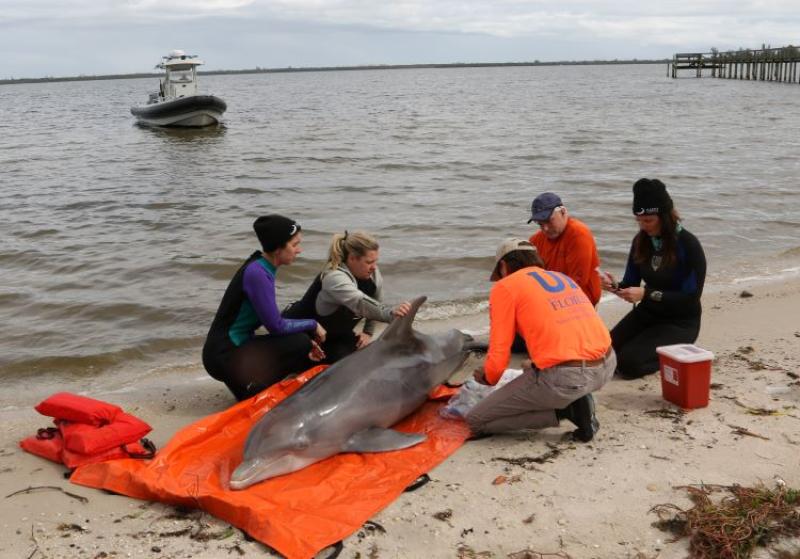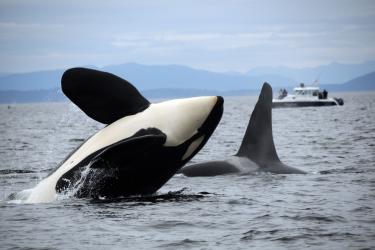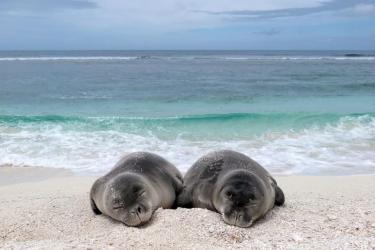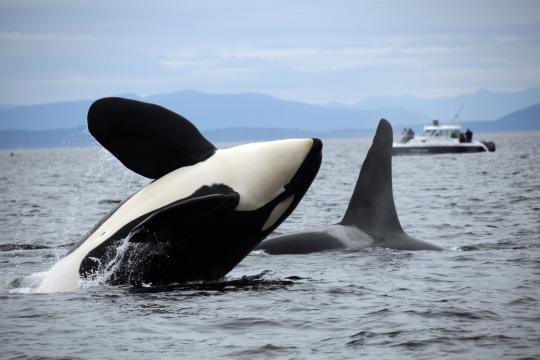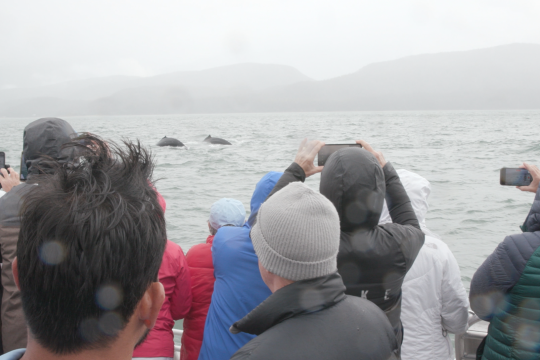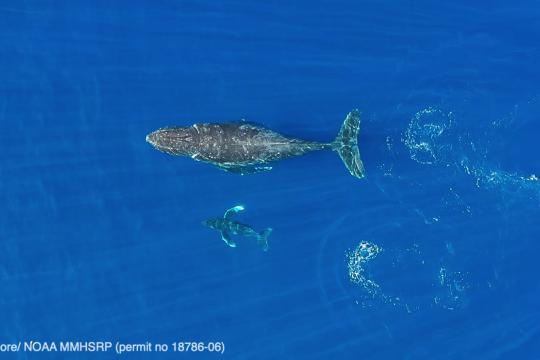NOAA Fisheries has released the 2018 Report of Marine Mammal Strandings in the United States: National Overview, and five regional overviews. They are the second installment in a series of annual stranding reports compiled by the NOAA Fisheries' Office of Protected Resources, Marine Mammal Health, and Stranding Response Program. In 2018, there were a total of 7,320 confirmed cetacean (whale, dolphin, and porpoise) and pinniped (seal and sea lion) strandings in the United States. These overviews detail marine mammal stranding rates, trends, and activities in the United States for the calendar year 2018. Overviews for the calendar year 2017 are also available.
NOAA fisheries declared three new Unusual Mortality Event investigations in 2018:
The Alaska Ice Seal UME was not formally declared until 2019, but elevated ice seal (bearded, ringed, and spotted seal) strandings occurred in the Bering and Chukchi seas beginning in June 2018. This drove pinniped stranding totals in the Alaska region in 2018.
What Is a Stranding?
Marine mammals are important sentinels of ocean health and climate change, and responding to stranding events helps us monitor health and environmental trends that may impact humans. A marine mammal is considered stranded if it meets one of the following criteria:
- Dead, whether on the beach or floating in the water
- Alive, on a beach, but unable to return to the water
- Alive, on a beach, and in need of apparent medical attention
- Alive, in the water, and unable to return to its natural habitat without assistance
Why Do Marine Mammals Strand?
Marine mammals strand for a variety of reasons. Results from examinations and necropsies (animal autopsies) show common causes of strandings include one or a combination of the following:
- Disease
- Harmful algal blooms and associated biotoxins
- Injuries due to vessel collisions, entanglements, or other human interactions such as gunshots
- Malnutrition
- Marine debris (entanglement or ingestion)
- Pollution exposure
Some strandings may also be related to unusual weather or oceanographic events. Additionally, in many cases, the cause(s) of stranding remains undetermined, especially when carcasses are found in advanced states of decomposition.
How to Report a Stranded Marine Mammal
If you come across a stranded marine mammal remain a safe and legal distance from the animal. Please report the animal to your regional 24/7 hotline. The most important information to collect is the date, location of stranding (including latitude and longitude), number of animals, whether the animal is alive or dead, and species, if known. Photos or videos (from a safe and legal distance) can also provide valuable information to network responders. Only trained and permitted responders should approach or pick up a stranded marine mammal. You can also download the Dolphin and Whale 911 Stranding App in the Apple Store to help report a stranding.
Leave Stranding Response to Trained Personnel
Every marine mammal stranding event is unique and poses different challenges. Organized stranding response by highly trained and authorized personnel best serves the well-being of the stranded animals, and helps manage risks to public health and safety. The U.S. Marine Mammal Stranding Response Network is composed of more than 120 organizations that provide first response capabilities for cetaceans and pinnipeds (except walrus) that are sick, injured, in distress, in peril, or dead. Live animals that are able to be rescued and rehabilitated provide valuable information on the biology, physiology, and health of those species. The lessons learned from relatively abundant species can greatly help the conservation of threatened or endangered species. Data collected from live or dead stranded animals can also provide important information regarding human impacts on marine mammals such as interactions between marine mammals and fisheries, vessels, marine debris, or the effects of pollution (oil spills, contaminants, and heavy metals), and support law enforcement investigations.
